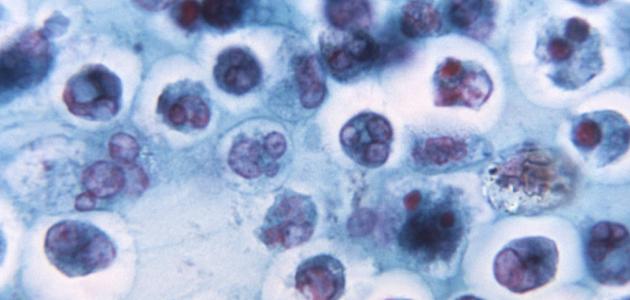Salts and minerals in the human body
Salts and minerals are chemical compounds that transform into positive and negative charged ions when they dissolve in water. They are very important in the human body for keeping it healthy and carrying out various functions at the cellular level. Among the most important of these functions are building bones, making hormones, regulating heartbeats, muscle contraction, and others. These salts and minerals are divided into two types according to the body's need: macromineralsThese are the minerals that the body needs in large quantities during the day, which include calcium, phosphorus, magnesium, sodium, potassium, chloride, sulfur, and trace minerals. trace minerals, which the body needs in small quantities and includes iron, manganese, copper, iodine, zinc, cobalt, fluoride, and selenium, and the best way to supply the body with these salts and minerals is appropriate nutrition and diversification of food items.
The most common type of salt
Each type of salts and minerals has a special function that it performs, and we will review the most important of these main salts and minerals in the human body:
- Sodium: Sodium is an essential element that the body needs to maintain good health. It is necessary to maintain fluid balance in the body, transmit nerve impulses, muscle contraction, and maintain blood pressure. It is found naturally in most foods. Sodium is added to foods for several reasons, such as preserving them from spoilage, or changing the taste. And the taste, and most people think that salt and sodium are the same thing, but in fact, sodium constitutes half of the salt content, and the other half is chloride, and it is classified among the positive salts, as the level of sodium in the blood ranges between (135-145 milliequivalent per liter).
- Potassium: It is classified among the positive salts, and therefore its measurement in the blood is considered one of the most important and accurate measurements. This concentration determines the neuromuscular excitation; Therefore, its deficiency or increase impedes the ability of the muscles to contract, and it is also responsible for regulating the heartbeat, and it is involved in the process of building bone and maintaining blood pressure, and the potassium level in the blood varies between (3.5-5.2 milliequivalent per liter).
- Chloride: Chloride is classified among the negative salts, and is considered very important for maintaining the acid-alkaline balance, regulating the balance of body fluids, and an essential element in the digestion process, and its level in the blood ranges between (95-105 mmol per liter).
- Calcium: It is one of the most important elements in the human body. This is due to its significant role in vital processes. It is involved in the structure of the skeleton, and is important in the transmission of nerve signals, blood clotting, the normal contraction of muscles, and the regulation of hormones. The level of calcium in the blood ranges between (8.5-10.3 mg per deciliter).
- Iron: Iron is one of the most important elements in the human body. This is because it participates in the formation of hemoglobin, which carries oxygen to the tissues and replaces it with carbon dioxide. It is involved in the synthesis of proteins and neurotransmitters, and the amount of iron present in the human body ranges from approximately (55-160 micrograms per deciliter) in men, and in women (40-155 micrograms per deciliter) and 70% of it is included in the formation of hemoglobin in the blood.
- magnesium: Magnesium participates in bone formation, affects muscles and nerves, and has a major role in the work of enzymes. Muscle cramps and general body weakness are among the most important symptoms of magnesium deficiency. Its amount in the blood ranges between (1.75-0.9 mmol per liter) in the body.
- Inorganic phosphorus: Phosphorous is considered one of the very important elements in the body, in addition to that it enters with calcium in the formation of bones, and it has a fundamental role in building amino acids inside cells, and its quantity in the blood ranges between (1.5-1 millimoles per liter).
Symptoms of high levels of salts in the body
The symptoms are many and differ according to the type of salt accumulated in the body, and the most important of these salts are:
Read also:What are the causes of body tremor?Sodium
The sodium level is considered high if it exceeds the barrier (145 milliequivalent per liter), and different symptoms appear according to the percentage of its height, and they are divided into two parts:
- Initial symptoms:
- poor appetite;
- Fatigue and nausea.
- vomiting;
- general weakness.
- extreme exhaustion
- A feeling of near loss of consciousness.
- Excess thirst.
- Feelings sag
- When the patient's condition worsens, these symptoms appear:
- Muscle spasm.
- muscle tremor
- Swelling in the feet.
- Nervousness and irritability.
- excessive sleepiness
- Thought disturbances and lack of focus.
- Nervous seizures.
- fainting;
potassium
When potassium exceeds the barrier (5.2 mEq per liter), a slight elevation may not be accompanied by any symptoms, as symptoms increase with increasing elevation, including:
- Muscle weakness.
- Wrenching and a tingling sensation.
- Nausea and vomiting.
- Problems and difficulty breathing.
- chest pain;
- Heart palpitations and a feeling of intermittent heartbeat.
- Failure to take appropriate treatment can lead to paralysis, cardiac arrest, and death.
chloride
A high level of chloride in the blood usually does not cause symptoms, and it is considered high if its readings exceed (107 millimoles per liter), but in some cases some of these symptoms appear:
Read also:forgetfulness treatment- Significant fluid loss leads to dehydration by repeated vomiting and diarrhea.
- High blood sugar level.
- Difficulty breathing, forcing the patient to take deep inhales and exhales.
- excessive thirst
- Weakness in the body.
- Rapid heartbeat.
- High blood pressure.
- Swelling and swelling in the legs.
- Cognitive impairment.
- Loss of consciousness and fainting.
Calcium
High blood calcium is defined if its concentration in the blood exceeds (10.3 milligrams per deciliter), and the patient may not experience any signs or symptoms in the event of moderate and little high calcium, but in more severe cases, symptoms associated with every part of the body that Affected by high levels of calcium, examples of which are:
- Urinary system and kidneysExcess calcium in the blood increases the burden on the kidneys to work harder to filter out excess, and this can cause extreme thirst and frequent urination.
- DigestiveHypercalcemia can cause stomach upset, nausea, vomiting, and constipation.
- Bones and musclesIn most cases, blood calcium may increase as a result of its filtering from the bones, which weakens them and causes pain in them, in addition to the fact that hypercalcemia weakens the muscles.
- The nervous system and the brainHypercalcemia can interfere with the way the brain works, leading to confusion, lethargy and fatigue.
Iron
The high level of iron in the blood is slow and chronic, and it is considered high if its rate exceeds (160 micrograms per deciliter) and results in several symptoms, most of which result from the accumulation of iron in the important organs of the body, including:
Read also:forgetfulness treatment- chronic fatigue
- Arthritis.
- Abdominal pain.
- Liver diseases, such as cirrhosis and liver cancer.
- diabetic.
- Arrhythmia.
- Heart attacks or heart failure.
- The color of the skin changes to a bronze color, or a pale greenish-gray color.
- Menopause.
- Osteoporosis.
- hair loss;
- Enlarged liver or spleen.
- ED
- infertility;
- Hypogonadism.
- Hypothyroidism.
- Pituitary insufficiency.
- Melancholy.
- Adrenal gland function problems.
magnesium
Human infection with an increase in the level of magnesium above (1.75 mmol per liter) is rare, but if it occurs, it causes a group of symptoms, including:
- Vomiting and nausea.
- Drowsiness, listlessness, and dullness.
- muscle weakness;
- Arrhythmia.
- Low blood pressure.
- Urinary retention.
- Shortness of breath and lung failure.
- heart attack.
inorganic phosphorous
Although most patients who suffer from an increase in the level of phosphorous above (1.5 mmol per liter) appear asymptomatic, and these symptoms are usually the result of the disease that causes the increase in the level of phosphorus, and these are some of the symptoms, such as:
- muscle cramps
- Numbness around the mouth or wheezing.
- Arthritis.
- Itching and rash.
- Tired.
- shortness of breath.
- Anorexia.
- Nausea and vomiting.
- Sleep disorders.
- Spasm in the wrist and foot.
- bouts of nervous convulsions.
Treatment of excess salts in the body
Treatment of excess salts in the body depends on the main cause of the disease. Each disease has its own treatment, but these are the preventive measures that must be followed when suffering from any of these diseases:
- Increase fluid intake daily and drink some natural juices that do not contain sugars.
- Reduce eating meat.
- Eat plenty of fresh vegetables with your main meals.
- Reducing the intake of table salt.
- Reducing the proportion of fats and proteins in meals
- Exercising continuously and compensating the body with an adequate amount of water
- Any increase in salts in the body should not be neglected, and the patient must follow the medications and doctor’s advice to avoid exacerbation of the condition and the risk of death.









